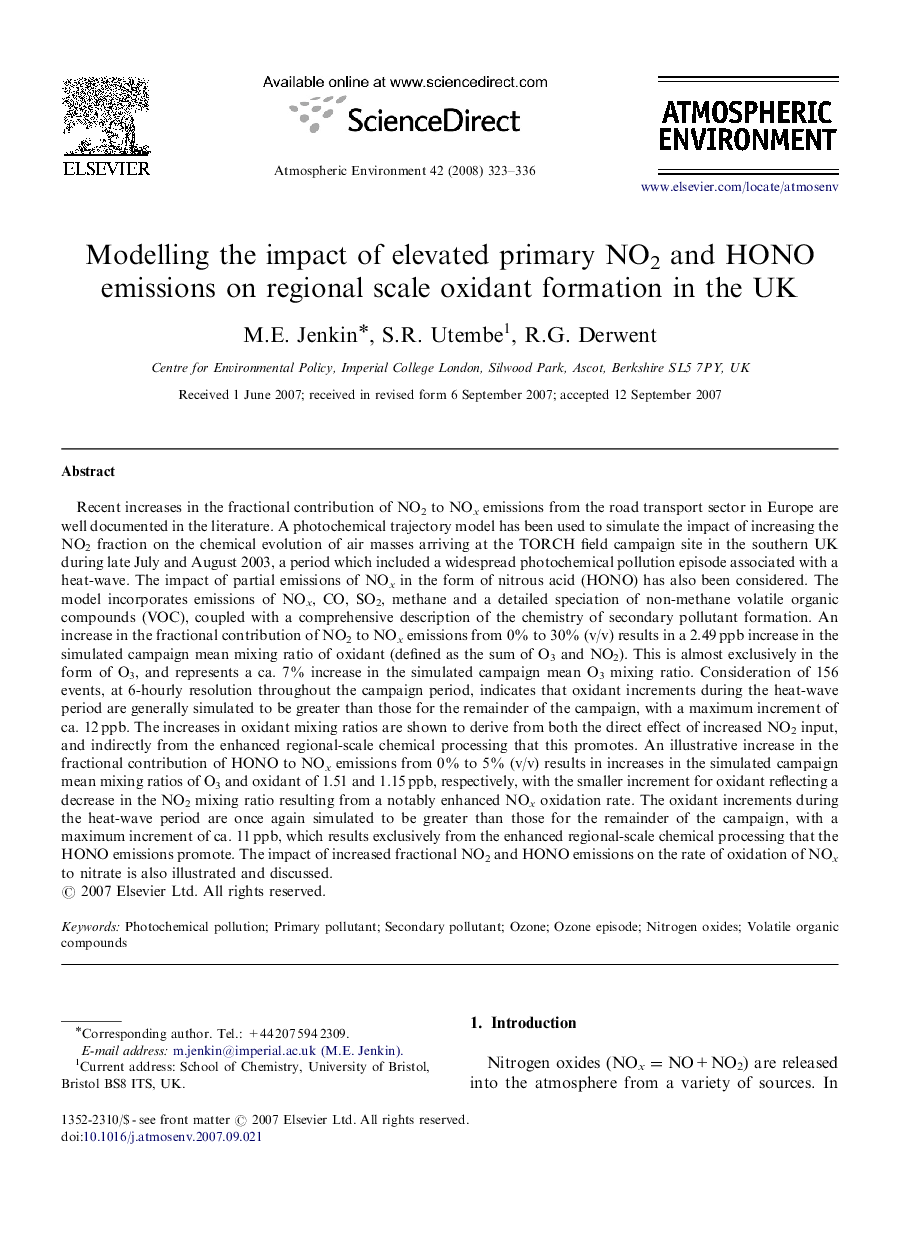| Article ID | Journal | Published Year | Pages | File Type |
|---|---|---|---|---|
| 4443259 | Atmospheric Environment | 2008 | 14 Pages |
Recent increases in the fractional contribution of NO2 to NOx emissions from the road transport sector in Europe are well documented in the literature. A photochemical trajectory model has been used to simulate the impact of increasing the NO2 fraction on the chemical evolution of air masses arriving at the TORCH field campaign site in the southern UK during late July and August 2003, a period which included a widespread photochemical pollution episode associated with a heat-wave. The impact of partial emissions of NOx in the form of nitrous acid (HONO) has also been considered. The model incorporates emissions of NOx, CO, SO2, methane and a detailed speciation of non-methane volatile organic compounds (VOC), coupled with a comprehensive description of the chemistry of secondary pollutant formation. An increase in the fractional contribution of NO2 to NOx emissions from 0% to 30% (v/v) results in a 2.49 ppb increase in the simulated campaign mean mixing ratio of oxidant (defined as the sum of O3 and NO2). This is almost exclusively in the form of O3, and represents a ca. 7% increase in the simulated campaign mean O3 mixing ratio. Consideration of 156 events, at 6-hourly resolution throughout the campaign period, indicates that oxidant increments during the heat-wave period are generally simulated to be greater than those for the remainder of the campaign, with a maximum increment of ca. 12 ppb. The increases in oxidant mixing ratios are shown to derive from both the direct effect of increased NO2 input, and indirectly from the enhanced regional-scale chemical processing that this promotes. An illustrative increase in the fractional contribution of HONO to NOx emissions from 0% to 5% (v/v) results in increases in the simulated campaign mean mixing ratios of O3 and oxidant of 1.51 and 1.15 ppb, respectively, with the smaller increment for oxidant reflecting a decrease in the NO2 mixing ratio resulting from a notably enhanced NOx oxidation rate. The oxidant increments during the heat-wave period are once again simulated to be greater than those for the remainder of the campaign, with a maximum increment of ca. 11 ppb, which results exclusively from the enhanced regional-scale chemical processing that the HONO emissions promote. The impact of increased fractional NO2 and HONO emissions on the rate of oxidation of NOx to nitrate is also illustrated and discussed.
